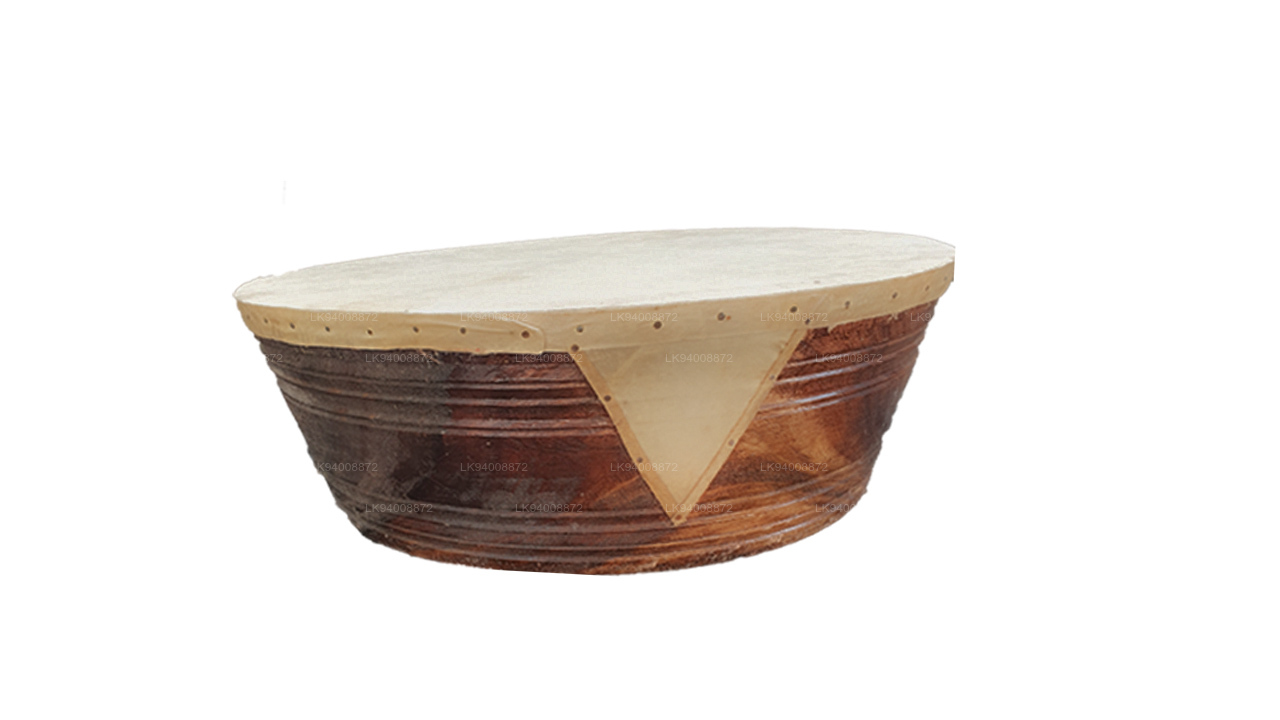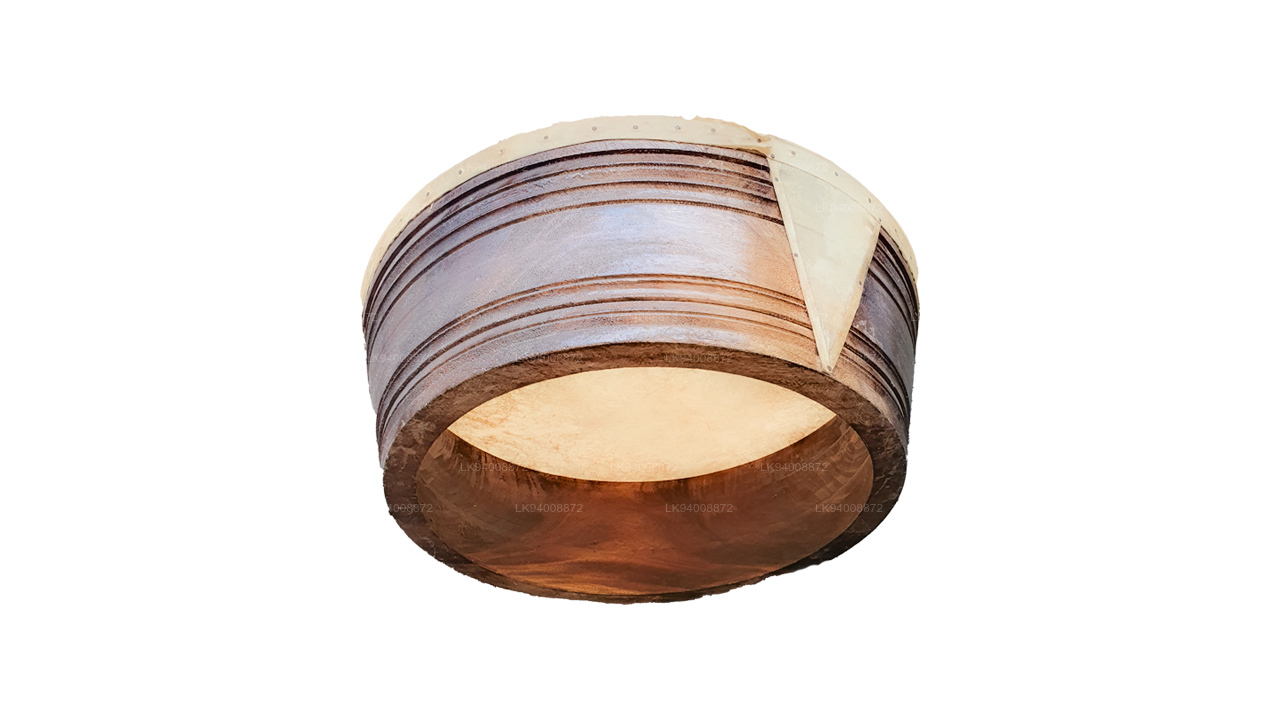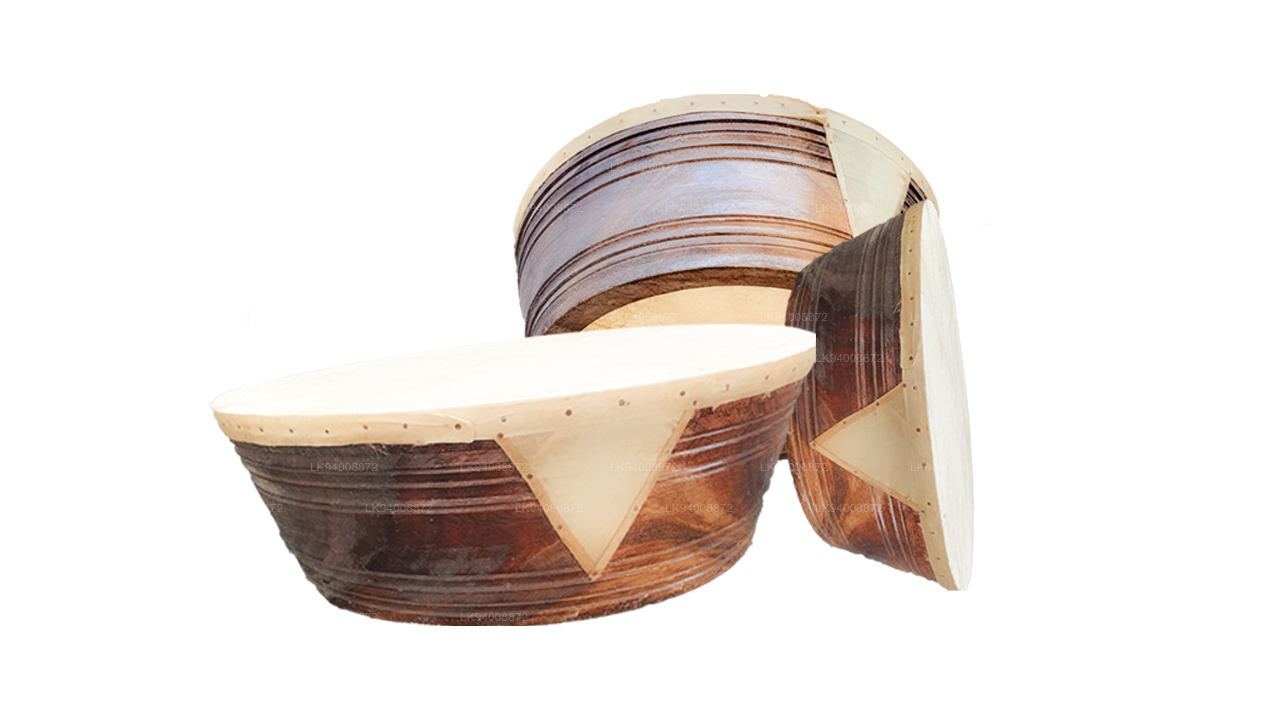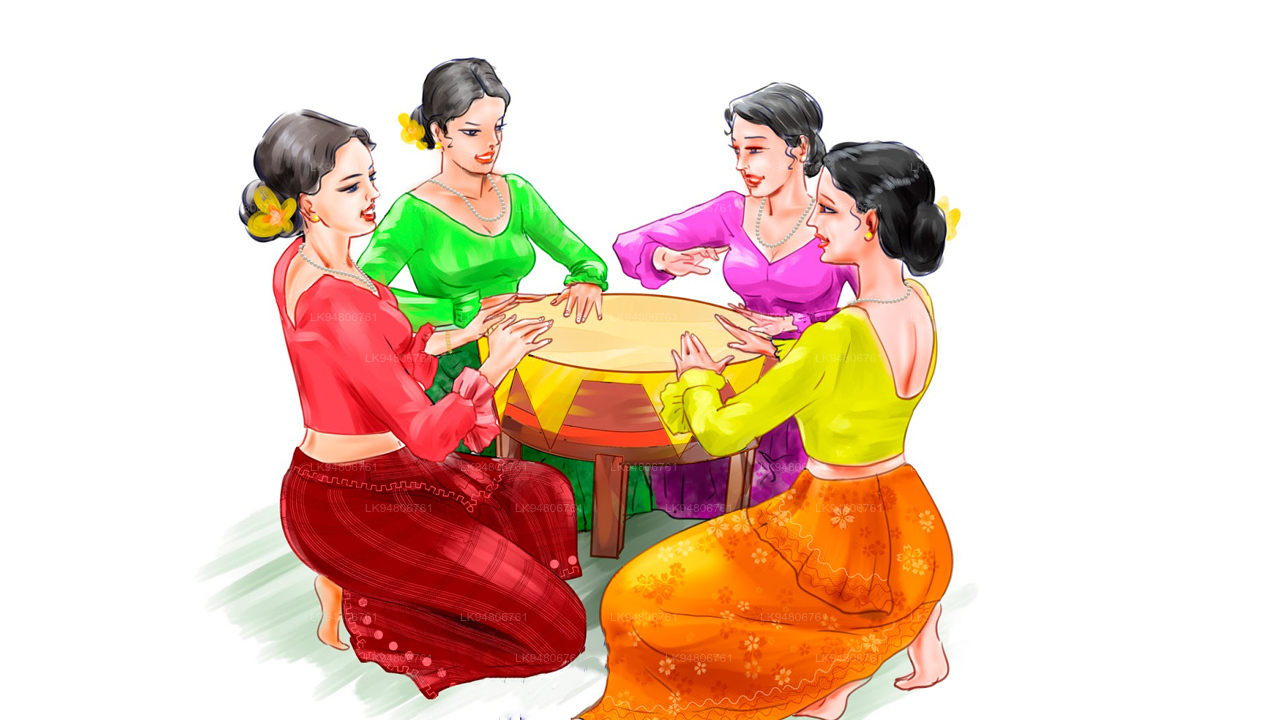
Musical Instruments
Traditional musical instruments like the tabla, sitar, and veena from India, the koto and erhu from East Asia, the oud and darbuka from the Middle East, and the djembe and kora from Africa, reflect rich cultural traditions and regional music styles.
Banku Rabana



Banku Rabana (බංකු රබාන), a traditional musical instrument (drum) played since the ancient times, comes in various types, each having its own unique history and purpose. Today, however, only a handful of these instruments are to be found in use, whereas the others remain but mere names in classical literature. Some such types of raban that are still in use in the traditional sense are Geta Bera, Yak Bera, Davula, Thammattama, Udakkiya, Dakkiya, Bummadiya, Hand rabana and the Bench rabana (Banku rabana). With the New Year hailing in, it is the Bench rabana or the Banku rabana also known as Maha beraya, that takes prominence in the joyous festivities. It is a fun activity enjoyed by all be it in the strumming of the rhythm, joining in the singing of the relevant folksongs or just being a bystander entertained by the beat.
HOW IT LOOKS
This is the biggest drum among the other drums in Sri Lanka and the face of the instrument could vary from approximately 24 to 48 inches. The frame of the drum is usually made of Sooriya, Margosa, Jak and Mara tree. Often goat skin is used for the face of the drum. It is an instrument that is placed low atop three wooden trunks several inches above ground and played by people taking their seats around it.
PREPARATION OF THE RABANA
Usually the leader of the group who plays the drum prepares the drum by placing it upon the wooden trunks and kindling a fire underneath it. This is said to tune the instrument for finer sound as the heat takes its effect upon the tautly stretched leather/ hide of the drum.
PLAYING IT
Once it is prepared only thing left is to play it! The “banku rabana” is the only drum that is played simultaneously by several people. It is generally played by women, this is however not a hard and fast rule and so you may also find the menfolk joining in on the fun.
The players take their seats around the drum and the leader of the group would sing out the “Raban Padhaya” which are folksongs specifically relating to the playing of the Banku rabana and follow various complicated rhythmic beats. The players would then follow the beat of the tune by playing it on the drum. They do this not only with the use of their hands but also their elbows, foreheads and sometimes they go so far as to use instruments such as bundles of ekels and keys to give a lively performance and life to the complicated rhythms. It is not uncommon to find some of the players dancing around the group whilst playing when the beat of the drums takes over the enthusiastic players.
It is an instrument brought out during times of joyous celebration and so is mainly seen during the New year time, weddings and other celebrations. It is also an instrument that bring a community together.


















